Technology
Cryogen Free Dilution Refrigerator using 4K-Cryocooler
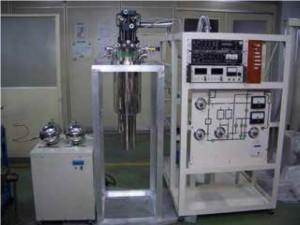
1.Introduction
ULVAC CRYOGENICS INC. obtained Cryogenic Equipment Division of Iwatani Industrial Gases Corporation, which produces and sells cryogenic refrigerators and their application products, on May 1, 2014.
Cryogenic Equipment Division of Iwatani jointly developed cryogenfree dilution refrigerators with Osaka City University from 2006 to 20131), 5). From 2014, ULVAC CRYOGENICS INC.
has started developing new dilution refrigerators with Osaka City University. This paper reports on the history and progress of these development efforts.
"Low temperatures" are necessary in various fields such as astronomy (cosmic structure), elemental microanalysis, next-generation computers (quantum computers), and new material research (advanced superconductors).Dilution refrigerators are the solution to generate extremely low temperatures of 1 K to several ten mK for developing next-generation technologies.
Helium atoms have two types of isotopes: one is common 4He with atomic weight of four and another is the lighter 3He with atomic weight of three. Both helium elements are stable and non radioactive, but their physical properties at cryogenic temperatures are completely different.
The dilution refrigerators rely heavily on the differences in physical properties of 3He and 4He. Until now, wet dilution refrigerators (the conventional type), in which cryogens (liquid nitrogen and liquid helium) are used to precool circulating 3He gas, can achieve a minimum temperature of 2 mK. And cryogen-free dilution refrigerators, in which mechanical refrigerators (4 K pulse tube refrigerators or 4K-GM refrigerators) are used to precool circulating 3He gas, can achieve a minimum temperature of 10 mK.
The advantages of dilution refrigerators are;
(1) The principle of dilution process is simple, so the structure of dilution refrigerator is rather simple too.
(2) High cooling power can be obtained even in low temperature region.
(3) Continuous operation can carry for long term (a few months).
(4) Operation of dilution refrigerators are almost completely unaffected by magnetic fields.
Despite those advantages, dilution refrigerators are not in common use by occasion of below.
(1) The processes required to reach final steady operation are rather complicated and difficult to understand.
(2) There are many valves need to operate and their operation procedures are complicated, so it is not easy for inexperienced operators to use.
(3) Equipments are expensive.
For the reasons stated above, if cryogen-free dilution refrigerators that can be operated easily and automatically for allowing general users to use them are developed, it is expected that dilution refrigerators will come to be used more widely.
2. Operation principles of dilution refrigerators
(1) Figure 1 illustrates a conceptual diagram of the dilution refrigerator. When liquid mixture of 3He and 4He is cooled below 0.8 K, mixture separate into two phases: a 3He dense phase (almost pure 3He) and a dilute phase (in which approximately 6% of 3He is diluted into 4He). The 3He dense phase is lighter, and floats on the dilute phase.
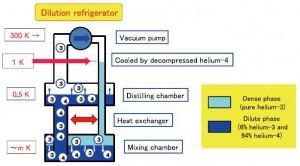
Figure 1 Conceptual diagram of a dilution refrigerator.
(2) When temperature of the distilling chamber is stabilized to approximately 0.5 K, only 3He will evaporate selectively due to the difference in the vapor pressure (fractional distillation). When 3He is vaporized in the distilling chamber, the concentration difference of 3He in the dilute phase between the distilling chamber and the mixing chamber will be arise. and 3He will move upward due to the osmotic pressure from the mixing chamber to the distilling chamber. To compensate for 3He evaporated in the distilling chamber, 3He in the dense phase at the mixing chamber will merge into the dilute phase.
<p(3) When 3He is forced to solve from the dense phase into the dilute phase, refrigeration power will be generate. This process is called dilution, so refrigerators using this process are called dilution refrigerators.
The liquid 4He at 0.5 K or lower temperatures has zero viscosity (superfluidity). 3He in the dilute phase can be regarded as a "gas" that can freely move in the superfluid 4He. Meanwhile, 3He in the dense phase can be regarded as a "liquid" state in which interaction of the 3He is strong .
Therefore, the dilution process can be regarded as a process in which the liquid state 3He evaporates to gas state 3He.
The refrigeration capacity produced in this process is correspond to the latent heat of vaporization.
(4) The 3He evaporated in the distilling chamber is discharged and compressed by an external vacuum pump and returned to the cryostat again.
After that, in a conventional dilution refrigerator, 3He gas is cooled down to 1K and liquefied with depressurized liquid 4He (precooling).
The liquefied 3He is further cooled through the heat exchanger and returns to the mixing chamber.
(5) As described above, 3He circulates in dilution refrigerators and generates cooling power continuously.
Dilution refrigerators can generate low temperatures from 1 K to several mK, have been widely used for measurement of physical properties, but currently less used in other area. The main problems are the equipment is large, liquid helium needs to be refill periodically, and especially the operation procedures to handle the dilution refrigerators are complicated, which makes it impossible for general users to handle the dilution refrigerators.
As a solution to solve all these problems at once, cryogen- free dilution refrigerators with mechanical refrigerators in place of liquid helium have been developed.
3.Cryogen-free dilution refrigerators
Figure 2 illustrates the schematic diagram of the cryogen-free dilution refrigerator. In the cryogen-free dilution refrigerator, the circulating 3He gas is cooled to approximately 3 K with a mechanical refrigerator (4K-GM refrigerator or 4 K pulse tube refrigerator). Then the 3He gas undergoes Joule-Thomson expansion with the JT valve and liquefies.
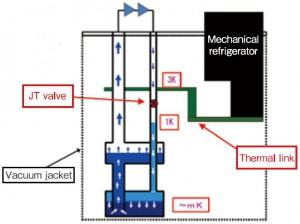
Figure 2 Schematic diagram of a cr yogen-free dilution refrigerator.
The advantages of cryogen-free dilution refrigerators are listed below.
(1) Easy operation (controlled automatically with computers), reduces the physical and mental burdens on researchers and allows easily operation on operators who do not have much experience.
(2) They can be made to be ultra-compact.
(3) It does not consume liquid helium (addressing the helium resource problem).
Meanwhile, the disadvantages are that efficiency is worse than conventional dilution refrigerators and mechanical refrigerators generate vibrations. Conventional dilution refrigerators can cool to minimum temperature of 2 mK, but cryogen-free dilution refrigerators can achieve only 10 mK range (refer to Chapter 5 to find out the reason).
4. Integrated cryogen-free dilution refrigerators(combined with mechanical refrigerators for precooling)
We developed and improved integrated cryogen-free dilution refrigerators from 2007 to 2010. The structure of the integrated cryogen-free dilution refrigerator is such that the 4 K pulse tube refrigerator (PDX-05 made by Iwatani Industrial Gases Corporation (0.5 W@4.2 K)) is thermally contacted with the dilution refrigerator main unit directly, as a way to precool the circulating 3He gas to cool down to temperature of 50 K with the first stage of the 4 K pulse tube refrigerator, then to temperature of 3 K with the second stage of the 4 K pulse tube refrigerator.
And then 3He gas undergoes Joule-Thomson expansion with the JT valve to cool and liquefy 3He (Figure 3).
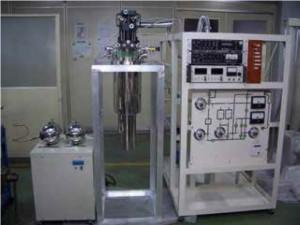
Figure 3 General view of an integrated cryogen-free dilution refrigerator (Left: compressor for pulse tube refrigerators, middle: dilution refrigerator main unit, right: gas handing system).
4 K pulse tube refrigerator have no pistons or other moving parts compared to 4K-GM refrigerator, so they have an advantage in the vibrations caused by the refrigerator are smaller.
Figure 4 shows the example of the cooling processes of the integrated cryogen-free dilution refrigerator. The refrigerator went through a precooling process, liquefaction process, and circulating process. And then it stabilized after approximately 30 hours passed. In figure 4, temperature hold constant at around 10 K for the waiting time of the control program, so it can be eliminated by changing the program setting. The minimum temperature of the integrated cryogen-free dilution refrigerator obtained in improvement test was 4.5 mK. The refrigeration capacity was 100 μW at 100 mK.
Microvibrations of the pulse tube refrigerator in integrated cryogen-free dilution refrigerator are propagated to the dilution refrigerator main unit. It was found that the micovibrations of the pulse tube refrigerator significantly affect the temperature of the mixing chambers at the temperature of the integrated cryogen-free dilution refrigerator is 10 mK or lower. In addition, the manufacture of the 4 K pulse tube refrigerator (PDX-05) was practically discontinued because the production cost was so high. Then we change the design to use 4K-GM refrigerator. And we separate the mechanical refrigerators from the main unit of dilution refrigerator to completely prevent the vibration from the 4K-GM refrigerator. We started developing separated dilution refrigerator in 2011.
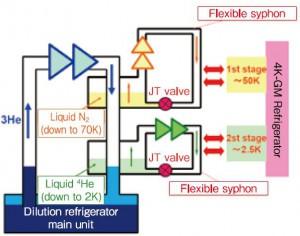
Figure 5 Schematic diagram of a separated cryogen-free dilution refrigerator.
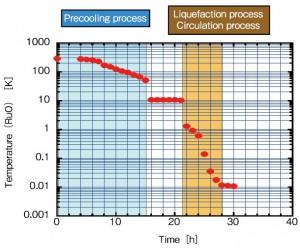
Figure 4 Example of the cooling processes of a dilution refrigerator.
5.Separated dilution refrigerators
In the separated dilution refrigerator, the 4K-GM refrigerator (HE10 made by Iwatani Industrial Gases Corporation (1.0 W@4.2 K)) is used. The 4K-GM refrigerator is completely separate from the dilution refrigerator main unit.
Flexible siphons are used to connect them and liquid nitrogen and liquid helium-4 liquefied with the 4K-GM refrigerator are transferred to the dilution refrigerator main unit for precool the circulating gas. The echanical refrigerator can be separated from the dilution refrigerator main unit, so the vibrations of the GM refrigerator are not transferred to the main unit.
The structure of the second stage flexible siphon in which liquid 4He circulates is as shown below. The 4He gas at atmospheric pressure is cooled by the 4K-GM refrigerator until liquefied at approximately 3 K. Then 4He isfurther cooled by the JT valve. The flexible siphon has two paths̶back and forth̶for the liquid helium-4. Liquid 4He is transported to the cryostat of the dilution refrigerator to cool the dilution refrigerator and then returns to the cryostat of the GM refrigerator, being circulated by the vacuum pump.
Vibrations at the mixing chambers of the integrated dilution refrigerator and the separated dilution refrigerator were measured and compared. The vibrations of the integrated dilution refrigerator with the pulse tube refrigerator were approximately 7 μm. The vibrations of the separated dilution refrigerator were able to be reduced to 2 μm or less. The separated dilution refrigerator uses GM refrigerators, the vibrations of GM refrigerator are large, but the flexible siphons shut out most of the vibrations.
However, the minimum temperature of the separated dilution refrigerator was 50 mK, proving inferior to the integrated dilution refrigerator. This is because the heat exchanger efficiency was worse in separating units and flexible siphons cause increasing heat input.
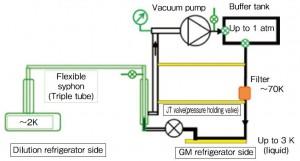
Figure 6 Structure of a flexible syphon (second stage).
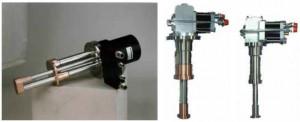
Figure 7 Types of 4K refrigerators (From left: 4K pulse tube refrigerator (PDX-05) and 4K-GM refrigerators (HE10 and HE05)).
6.Summary and assignment
We have developed two types of cryogen-free dilution refrigerators: the integrated type and separated type. We have succeeded in achieving a minimum temperature of 4 mK for the integrated cryogen-free dilution refrigerator; nearly a world record for cryogen-free dilution refrigerators.
We intended to improve the performance of separated cryogen-free dilution refrigerator, but the temperature was slightly inferior due to the reduction in the heat exchanger efficiency. We tried to improve the flexible siphons, but could not significantly improve them, so the minimum temperature remained at 45 mK.The price of 3He gas becomes a problem in terms of cost for dilution refrigerators. The price of 1 L of 3He gas at atmospheric pressure was several tens of thousands of yen when we first developed the dilution refrigerators, but the price temporarily surged to more than half a million yen. It remains at around 400 thousand yen recently.
Our new development objectives are to create refrigerators that reach 80 to 100 mK, temperatures used for general purposes, and smaller and less expensive units. Specifically, we will aim at reducing the overall costs: the volume of 3He gas used will be significantly reduced compared to prior models and the smaller and less expensive HE05 (0.5 W@4.2 K) will be used as the 4K-GM refrigerator. Moreover, we will pursue even greater ease of use.
We have been developing new models with the goals listed below in order to arouse demand from new users who have not used cryogen-free dilution refrigerators.
・ Refrigerators that can be programmed to operate completely automatically for long hours.
・ Refrigerators that do not require operation of valves and adjustment of the mixed quantity of 3He and 4He in the cooling process.
・Reduction of the cooling time from room temperature.
・The smallest size and lowest prices.
Finally, photographs of the 4 K refrigerators used for cryogen-free dilution refrigerators are shown in Figure 7. From the left, the 4 K pulse tube refrigerator (PDX-05) and 4K-GM refrigerators (HE10 and HE05).
Joint Development of Cryogen Free Dilution Refrigerator using 4K-Cryocooler Tomio NISHITANI*1 and Tohru HATA*2
*1 Cryogenic Equipment Division, Ulvac Cryogenics Inc. 60 Ujihinojiri, Uji, Kyoto, 611-0021, Japan
*2 Ultra Low Temperature Laboratory, Graduate School of Science, Osaka City University. 3-3-138 Sugimoto, Sumiyoshi-ku Osaka, Osaka 558-8585, Japan
Cryogenic Equipment Division of Iwatani Industrial Gases Corporation (IIG), which produces and selles cryogenic refrigerators and their application products, was transferred to Ulvac Cryogenics Incorporated on May 1, 2014. Cryogenic Equipment Division of IIG and Osaka City University jointly developed cryogen- free dilution refrigerator from 2006 to 20131)-5). From 2014, Ulvac Cryogenics Incorporated has succeeded this effort and has been developing a new dilution refrigerator with Osaka City University This paper reports the history and progress of these development efforts.
Acknowledgments
The cryogen-free dilution refrigerators introduced in this paper were developed in cooperation with Osaka City University's Ultra Low Temperature Group. We offer cordial thanks to Osamu Ishikawa, Hideo Yano, and Ken Obara.
References
1) T. Hata, T. Nishitani, S. Togitani, A. Handa, K. Obara:Development of New Type Dilution Refrigerator Using Pulse Tube, 137.
2) T. Hata: Dilution Refrigerator without Refrigerant, Journal of the Cryogenic Association of Japan No.2 (2008), 44.
3) A. Handa, S. Togitani, T. Nishitani, K. Obara, H. Yano, O. Ishikawa, T. Hata, Dilution Refrigerator without Refrigerant, Collected Abstracts of Cryogenic and Superconductivity Society of Japan (Autumn 2009), 33.
4) A. Yamaguchi, K. Obara, H. Yano, O. Ishikawa,T. Hata, A. Handa, S. Togitani and T. Nishitani,Development of Dry Dilution Refrigerator and
Temperature Measurement with Quartz TuningFork. Proceedings of Low Temperature Physics,(2011), 26.
5) T. Hata, T. Matsumoto, K. Obara, H. Yano, O.Ishikawa, A. Handa, S. Togitani and T. Nishitani,Development and Comparison of Two Types of Cryogen-Free Dilution Refrigerator, Journal of Low Temperature Physics Vol.175( 2014), 471-479.
(※ This article was released in "Technical Journal No.79 published in June, 2015")
Technology
-
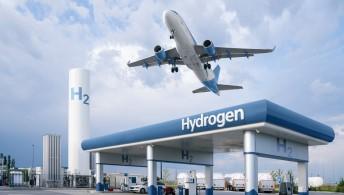
Pioneering Hydrogen Leak Detection for a Sustainable Future: ULVAC's HELIOT 900
-

Reliable and Efficient Leak Detection Solutions for Battery Manufacturers: ULVAC's HELIOT 900
-
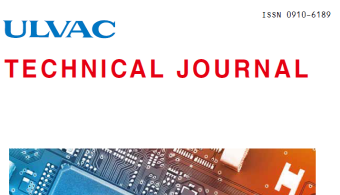
Introduction of Liquid Nitrogen Generator" EMP Series" and New Product" UMP-40W"
-
"LS Series" Dry Vacuum Pumps with High Pumping Speed and Low Power Consumption
-
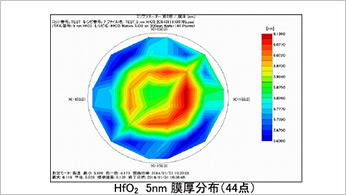
High-speed spectroscopic ellipsometer UNECS series measurement examples
-
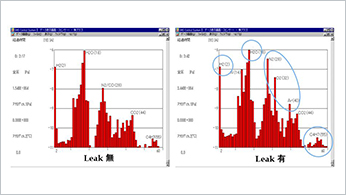
Applications of Process gas monitor.
-
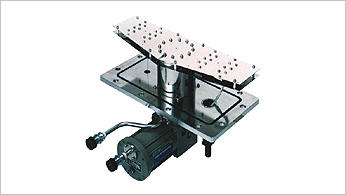
Launch of Cryogenic trap using a helium refrigerator to replace CFC substitute cold trap
-
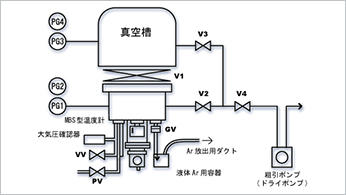
Rapid low-temperature regeneration ... Reduction of regeneration time.
-
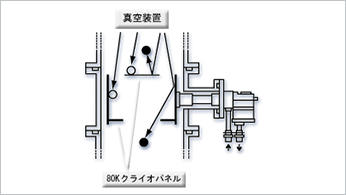
Applications and examples of effective use of Super Traps
-
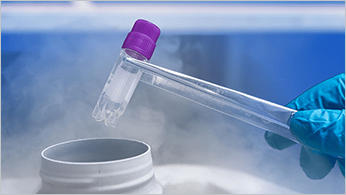
Liquid Nitrogen Generator in diverse fields
-
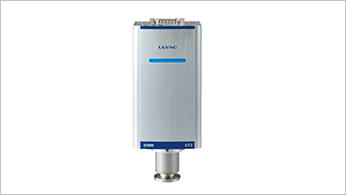
Vacuum Gauge ST2 Technical report
-

Liquid Nitrogen Generators | Technical Report
-
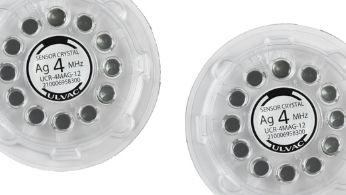
Development of a quartz crystal disc with a resonance frequency of 4 MHz
-

HELIOT900 | Technical report
-
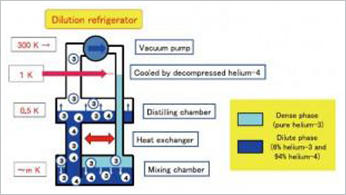
Cryogen Free Dilution Refrigerator using 4K-Cryocooler
Solution
- Big Science
- Lifestyle
- Technology
- Medical Field
